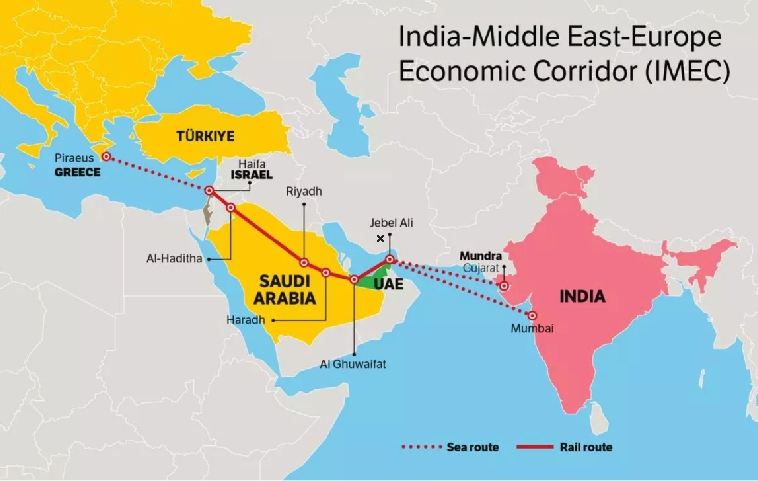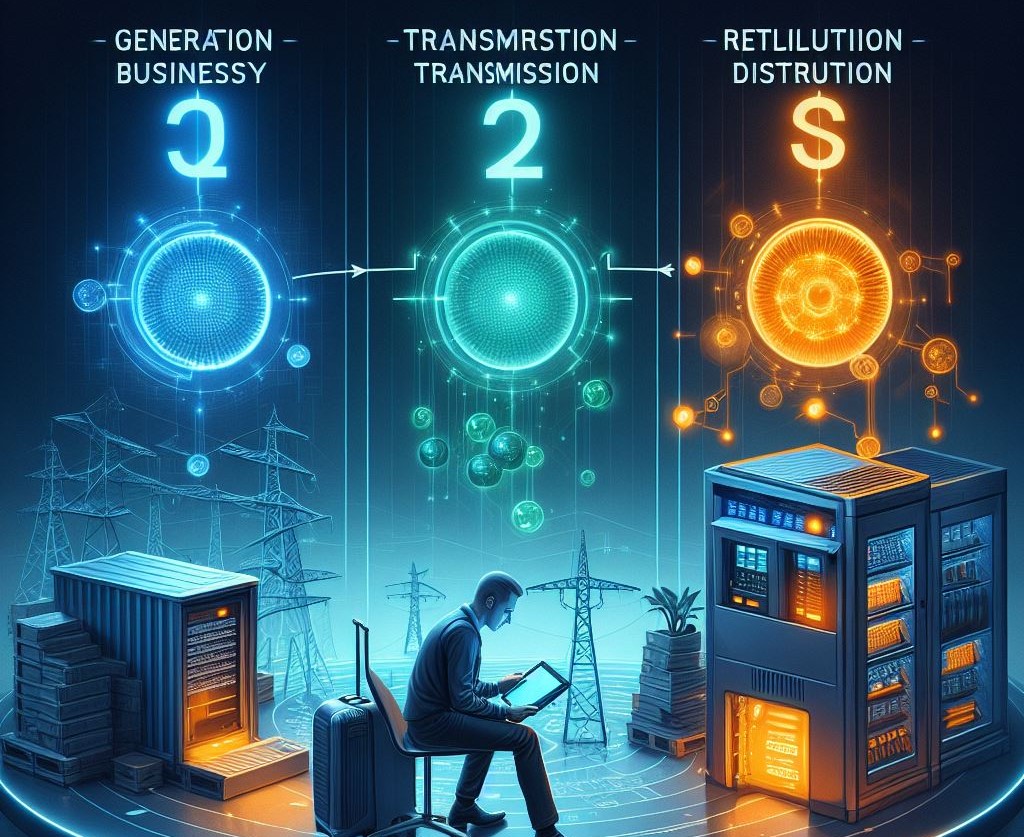
India-Middle East-Europe Economic corridor
- January 10, 2024
- 0
Recently, the India-Middle East-Europe Economic Corridor (IMEC) Project was signed at the G20 Summit in New Delhi, which holds significant geopolitical and economic implications for India.
It aims to create a comprehensive transportation network, comprising rail, road, and sea routes, connecting India, the Middle East, and Europe. And to enhance transportation efficiency, reduce costs, increase economic unity, generate employment, and lower Greenhouse Gas (GHG) emissions. It is expected to transform the integration of Asia, Europe, and the Middle East by facilitating trade and connectivity.
The project forms part of the Partnership for Global Infrastructure and Investment (PGII). PGII is a values-driven, high-impact, and transparent infrastructure partnership to meet the enormous infrastructure needs of low and middle-income countries.
Upon completion, it would provide a “reliable and cost-effective cross-border ship-to-rail transit network to supplement existing maritime and road transports”.
The proposed IMEC will consist of Railroad, Ship-to-Rail networks and Road transport routes extending across two corridors, that is, the East Corridor – connecting India to the Arabian Gulf and the Northern Corridor – connecting the Gulf to Europe.
The IMEC corridor will also include an electricity cable, a hydrogen pipeline and a high-speed data cable.
Signatories are India, the US, Saudi Arabia, UAE, the European Union, Italy, France, and Germany.
Ports to be connected are:
India: Mundra (Gujarat), Kandla (Gujarat), and Jawaharlal Nehru Port Trust (Navi Mumbai). Middle East: Fujairah, Jebel Ali, and Abu Dhabi in the UAE as well as Dammam and Ras Al Khair ports in Saudi Arabia. Israel: Haifa port. Europe: Piraeus port in Greece, Messina in South Italy, and Marseille in France.
Railway line will connect Fujairah port (UAE) to Haifa port (Israel) via: Saudi Arabia (Ghuwaifat and Haradh) and Jordan.
Trade Opportunities:
IMEC presents a transformative opportunity for India to boost economic growth by enhancing its trade connectivity with key regions.
The route could significantly reduce transit times, making trade with Europe 40% faster compared to the Suez Canal maritime route.
The corridor will create an efficient transport network for the seamless movement of goods. This will encourage industrial growth, particularly in regions connected to the corridor, as companies will find it easier to transport raw materials and finished products.
The corridor can facilitate secure energy and resource supplies, especially from the Middle East. Reliable access to these resources will stabilize India’s energy sector and support its growing economy.
There are several Challenges to the India-Middle East-Europe Corridor (IMEC)
Developing a multimodal transport corridor involving rail, road, and sea routes spanning multiple countries requires complex logistical planning and coordination among stakeholders.
Selecting the most viable and cost-effective routes, assessing the feasibility of rail and road connections, and ensuring optimal connectivity are key challenges.
Coordinating efforts, policies, and regulations among multiple countries with diverse interests, legal systems, and administrative procedures is a major challenge in realizing this cross-continental corridor.


































































